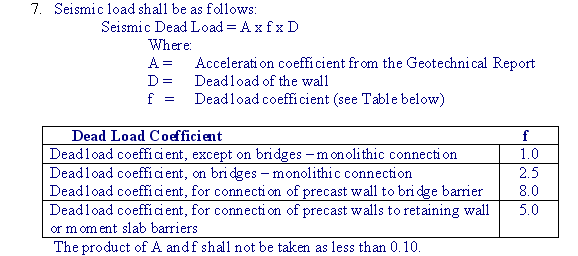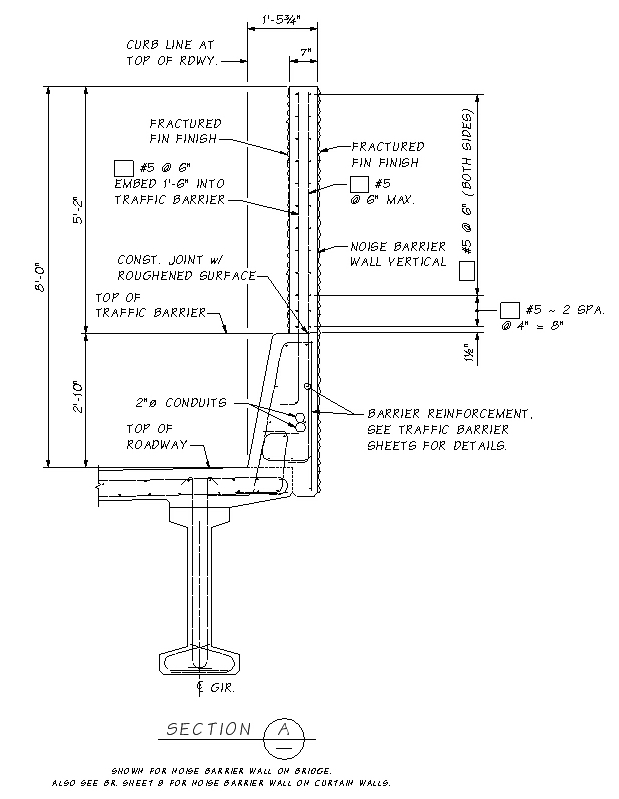SUBJECT: Noise Barrier Wall on Bridges and Retaining Walls
Placement of noise barrier walls on bridges and retaining walls should be avoided if possible. These structures may cause increase in risk to traffic below during seismic events or in case of vehicular impact. However, if necessary to place a noise barrier wall on a bridge or a retaining wall, the following guidelines shall be considered as minimum requirements for design and detailing of these walls:
1. The total height of noise barrier wall on bridges, from top of slab to top of noise barrier wall, shall be limited to 8’-0”-
2. The total height of noise barrier wall on retaining walls, from top of roadway to top of noise barrier wall, shall be limited to 14’-0”
-
3. Noise barrier wall thickness shall be 7 inches minimum
-
4. Two layers of reinforcing bars shall be specified in the cross section, with 1.5” cover, minimum, over both faces
-
as shown in the attached detail.
-
5. Wind load shall be based on BDM Section 3.11
-
6. The vehicular collision force shall be based on the LRFD Table A13.2-1 for design forces for traffic railing. The transverse force
-
shall be applied horizontally at 3’-6” height above deck.

8. Joints for noise barrier wall placed on bridges and retaining walls shall be plumb.-
9. AASHTO LRFD Bridge design specifications shall be used for the structural design of noise barrier walls.
Noise barrier walls on bridges and retaining walls are considered special design and shall be designed on a case by case basis. WSDOT Standard Plans for Noise Barrier Walls may not be used for these applications.
The design requirements for precast wall panel connections to bridge and retaining wall barriers are different than for cast-in-place construction. Changing the noise barrier wall type from cast-in-place to precast requires approval of the Bridge Design Engineer.
Background
The design and detailing requirements for noise barrier walls on bridges and retaining walls adjacent to the traveling public are different than the ones away from the traveling public. The failure of these noise barrier walls is a safety hazard for the traveling public. The noise barrier wall height limitation is from the FDOT crash test data. The wall height limitation of 8’-0” for noise barrier wall on bridges is to allow for bridge inspection using the UBIT.
The increased wall thickness and requirement for two layers of rebar are for better structural performance in case of truck collision or seismic events.
The simplified wind load requirements shown in BDM Section 3.11 replace the wind load requirements of the AASHTO LRFD and the AASHTO Guide Specifications for Sound Barrier design.
The increased design requirements for precast noise barrier walls on bridges and retaining walls is adopted from the AASHTO Guide Specifications for Sound Barrier design to ensure the adequacy of the connection over the years in service.
If you have any questions regarding these issues, please contact Bijan Khaleghi at 705-7181.
cc: Mohammad Sheikhizadeh, Bridge Construction - 47354
F. Posner, Bridge and Structures – 47340



